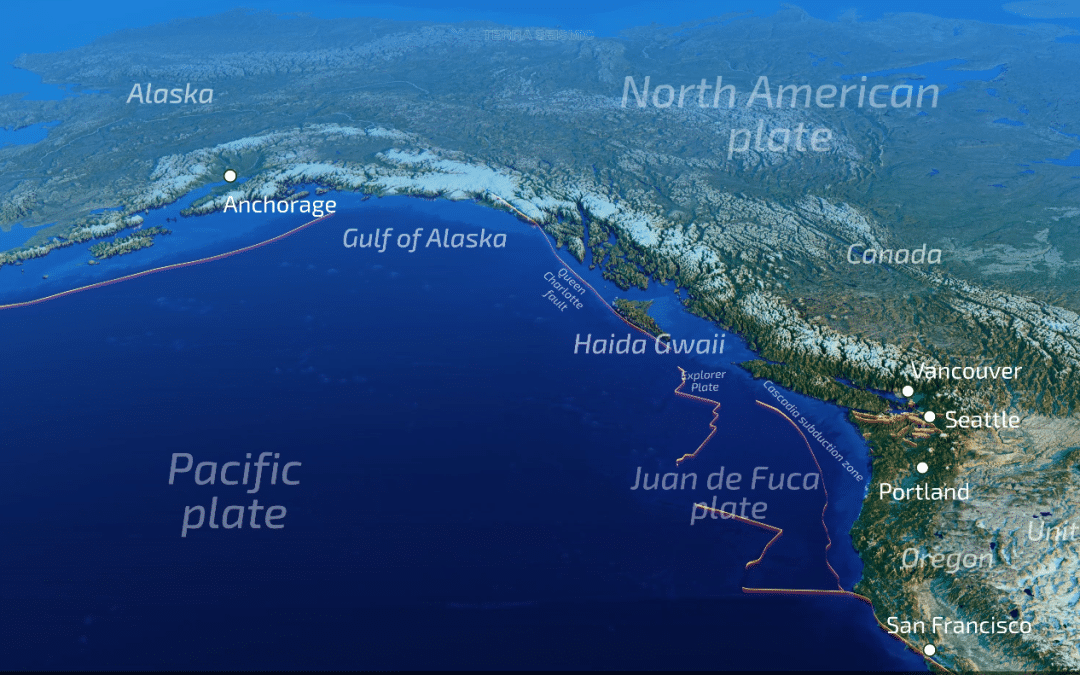Seismicity in Alaska is primarily defined by its position at the boundary of two major tectonic plates: the Pacific Plate and the North American Plate. Here are the key factors contributing to the seismic activity in the region:
Subduction Zone: The primary source of seismicity in Alaska is the subduction of the Pacific Plate beneath the North American Plate along the Aleutian Trench. This process is responsible for frequent and sometimes very large earthquakes and volcanic activity along the Aleutian Islands.
Transform Faults: Along the southern margin of Alaska, particularly in the region of the Aleutian Islands, the Pacific Plate and the North American Plate slide past each other horizontally. The most notable of these is the Fairweather Fault. These transform faults generate significant seismic activity.
Crustal Earthquakes: In addition to subduction and transform faults, Alaska experiences crustal earthquakes within the overriding North American Plate. These can occur throughout the state and are caused by regional stress adjustments.
Megathrust Earthquakes: The interface between the subducting Pacific Plate and the overlying North American Plate can produce extremely powerful megathrust earthquakes. The 1964 Great Alaska Earthquake, the second-largest earthquake ever recorded, is an example of such an event.
Volcanic Activity: The subduction process also involves significant volcanic activity along the Aleutian Arc. The interaction between tectonic activity and magma movement can trigger earthquakes.
Glacial Rebound: In some areas of Alaska, the melting of large glaciers is leading to adjustments in the Earth’s crust as the ice’s previously heavy weight is removed. This process, known as isostatic rebound, can also cause earthquakes.
Overall, the dynamic interaction between these geological processes makes Alaska one of the most seismically active areas in the United States, characterized by frequent and diverse earthquake activity.

